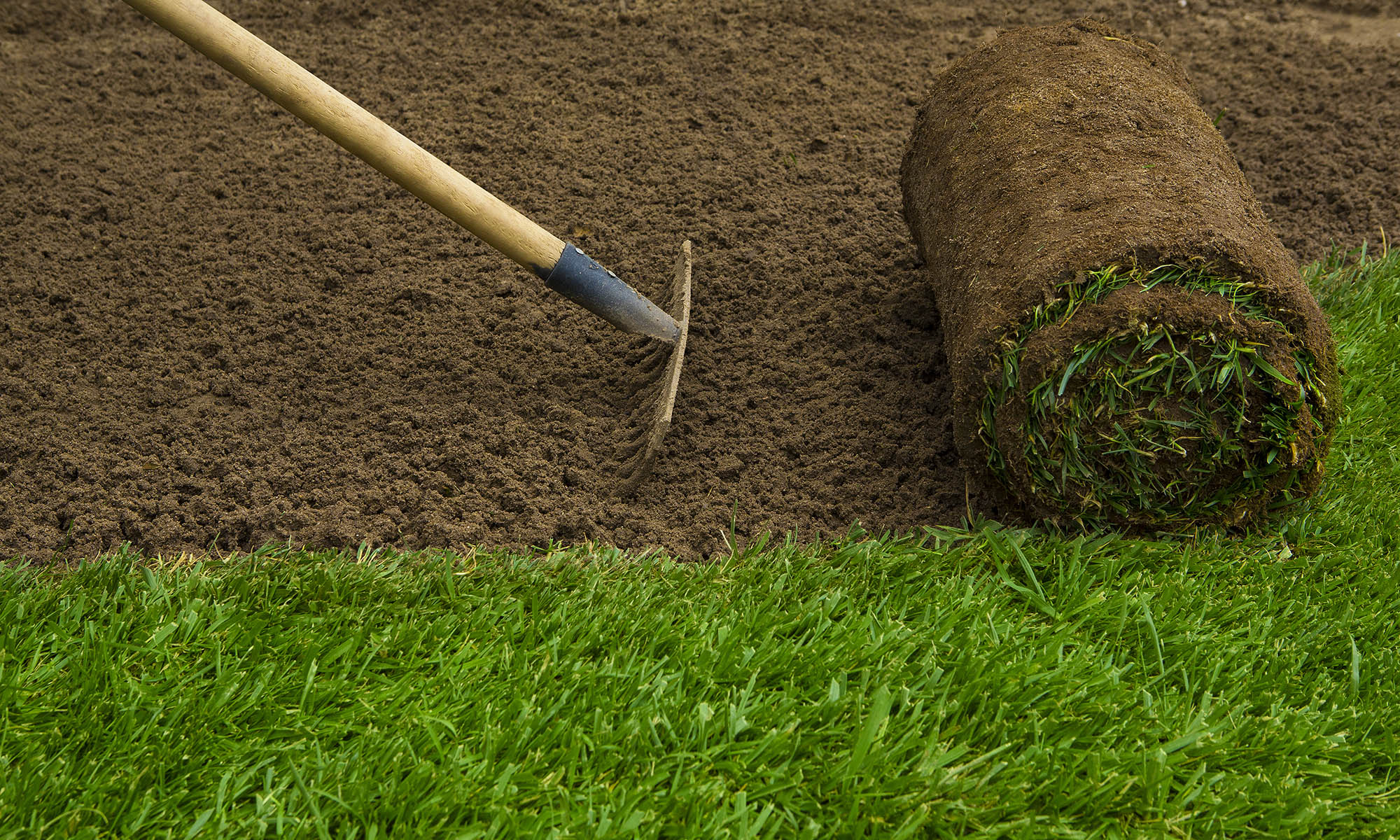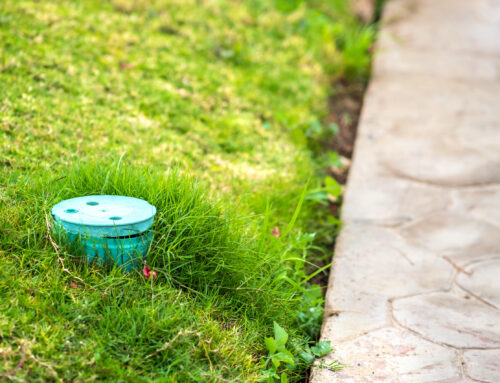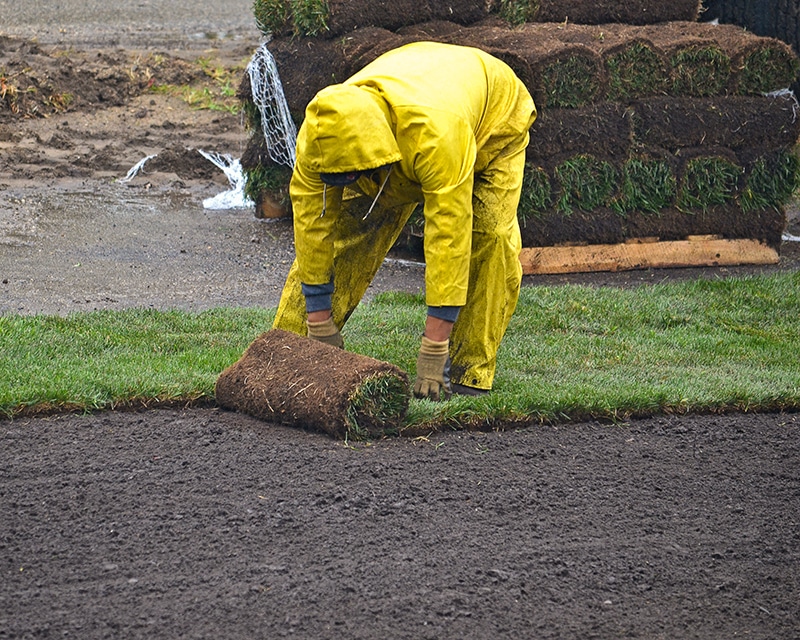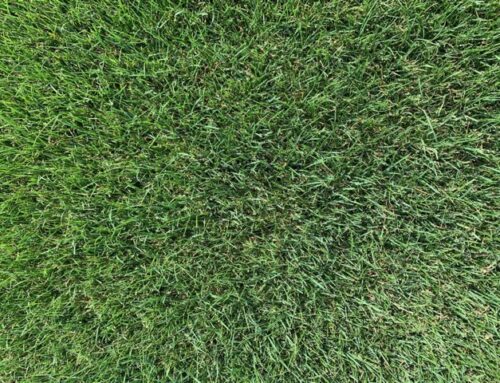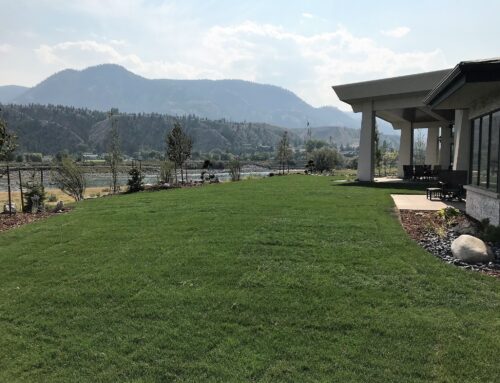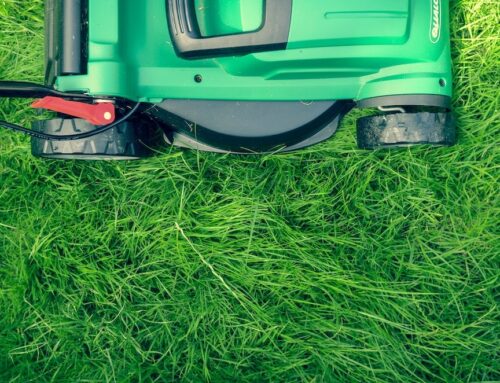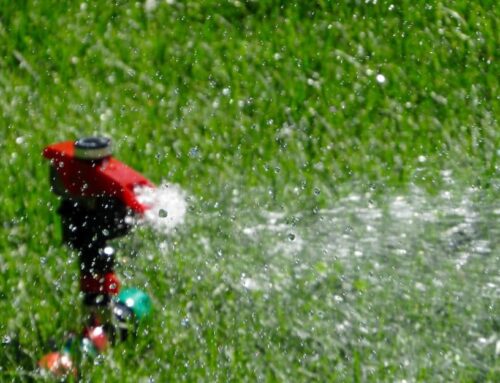For you to achieve the best possible results when laying new sod, the installation site needs to be properly prepared. The best time to deal with weeds, uneven surfaces, and other landscape issues is before you attempt to put down the new lawn.
Here’s how to prepare for a sod installation:
Test the Soil
Your soil may be missing some of the nutrients it needs for a healthy lawn. You can search online for a local soil-testing lab, which will provide instructions for collecting and submitting samples. Once the testing is complete, you will receive a report telling you which nutrients are deficient and how to amend soil pH to the ideal level.
Remove Old Soil, Weeds, and Debris
Using a non-selective vegetation killer, eliminate all the vegetation in the area you will sod. This should be done a month before tearing up the old sod. Because the herbicide will kill all plants without discrimination, be sure to keep it well away from garden beds or shrubs.
Grade the Lawn Area
This is an important task that will save you from expensive drainage repairs in the future. Dips should be filled in and peaks broken up to avoid an uneven appearance once the new sod is installed and prevent pockets of water build-up. You will want a slight slope leading away from structures, or if that is somehow not possible, at least toward a functioning drainage system. Large areas may not be possible to grade by hand and thus require appropriate equipment, such as a Bobcat.
Add New Topsoil
Take some time to find the right topsoil. You will want well-draining, non-compaction high-nutrient, and proper pH-balanced soil. You should add 6 inches of topsoil and may also use manure or compost.
Add Soil Amendments
Use the results from your soil testing to determine which treatments are required. Some of the more common amendments include lime to increase your soil pH, sulfur to lower it, and compost to improve soil health overall and add structure.
You can order soil & soil amenders in the Fraser Valley from Western Turf Farms
Till the Soil
If your soil requires amendments, till the topsoil a few inches deep to help work them into the soil. If the soil is compacted, this will also help to loosen it, allowing roots to penetrate more easily. Limit this to one or two passes to avoid damaging the structure of the soil.
Rake and Remove Debris
Pick up any debris, as well as any stones larger than a quarter. Rake to level off any ridges, smoothing out the soil as much as possible. Debris can prevent root-to-soil contact, while air pockets beneath the soil will kill the grass above them.
Water the Soil
If the soil is dry, sod won’t attach properly, so the installation area should be watered. Make the area damp, but not wet. If you overdo it and find it has become muddy, allow it to dry slightly.
The easiest way to prepare for a sod installation is to turn to Sod Crew. Our team understands that each installation is unique and will create an appropriate plan that addresses your needs. From removing old sod and weeds to creating a solid, consistent foundation, we will do everything necessary to ensure the best possible installation.
For more information on preparing your installation site and laying sod, please contact Sod Crew today.

